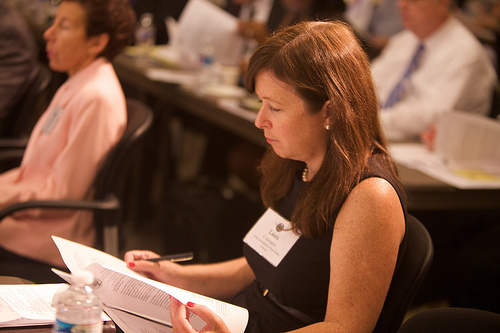Once construction of a new downtown Charleston, South Carolina elementary school is complete, the Brentwood Middle School now housing its students will be empty. Local leaders are considering using it as a model for a new experiment in school flexibility.
“The state legislature passed a brand new law (Title 59-19-350) in May 2012 that allows districts to be creative and flexible in delivering educational services within the district,” explains Cindy Bohn Coats, chairwoman of the Charleston County School Board (CCSB).
Charleston is the first district to move toward taking advantage of this new flexibility law.
Such measures often allow districts to convert traditional schools to charter schools—public schools that accept students outside district attendance zones and receive more regulatory freedom in exchange for tighter accountability. Charleston school leaders are considering a variation on this concept by partnering with a local private school to reopen Brentwood with a defined attendance zone in an effort to provide choice and relieve overcrowding in its high-poverty neighborhood.
Private-Model Public School
Meeting Street Academy (MSA) opened in Charleston in 2008 to give parents an option outside the poor-performing public schools their children must otherwise attend. The pre-K-to-fourth-grade school focuses on poor and academically struggling children. Although it spends approximately $12,000 per child per year, outside donors have largely bankrolled its efforts. Fees to attend MSA are calculated on a sliding scale, with parents generally spending less than $400 a year to educate a child. Since 2008, attendance has grown to 120 students, and the school’s intensive vocabulary and literacy-based pre-K instruction appear to be producing results.
Charleston’s school board is considering having MSA manage the reopened Brentwood school to serve more than 100 children from age three through first grade in its first year. School operations would be funded by both Charleston County Public Schools (CCPS) and MSA in a roughly 80/20 split. Students would be educated using MSA’s current academic model.
Coats notes the proposed partnership is currently only in the discussion phase; a Memorandum of Understanding (MOU) must be created between MSA and CCPS before the board can take concrete steps.
“As a public body, we needed to openly state that we are looking at this partnership and that we think it is a good idea to explore,” she said. “Without a public approval of an MOU, the district and the Meeting Street Group [the umbrella organization for the two current MSA campuses] could not begin these discussions in earnest. That would not have been good public policy and would have lacked transparency. Any approval to begin operations will have to come from the CCPS board and will specifically outline the rights, roles, and responsibilities of each party.”
Education Officials Speak Out
Though several CCPS board members have voiced questions regarding the merger, CCPS Superintendent Nancy McGinley has said she thinks MSA could handle a public school because of its comprehensive approach to education. MSA uses a unique community method that includes early education, working closely with entire families, offering medical and dental screening and healthy meals, and giving teachers specialized training and coaching to help students from high-poverty backgrounds succeed academically.
State Superintendent Mick Zais has commended Charleston education leaders for their “creativity” and “innovation” in proposing the idea.
Once the MOU between MSA and CCPD is complete, the public will have an opportunity to help determine whether the project should move forward. In an overcrowded district with few education options, parents and community members may well elect to have their district continue its movement toward more public school flexibility.
Different from many charter and private schools, “This will be a traditional school—any child living in this attendance zone of this school age will go to this school and will be admitted into class at any time,” Coats says. “No waiting lists, no lottery.”




